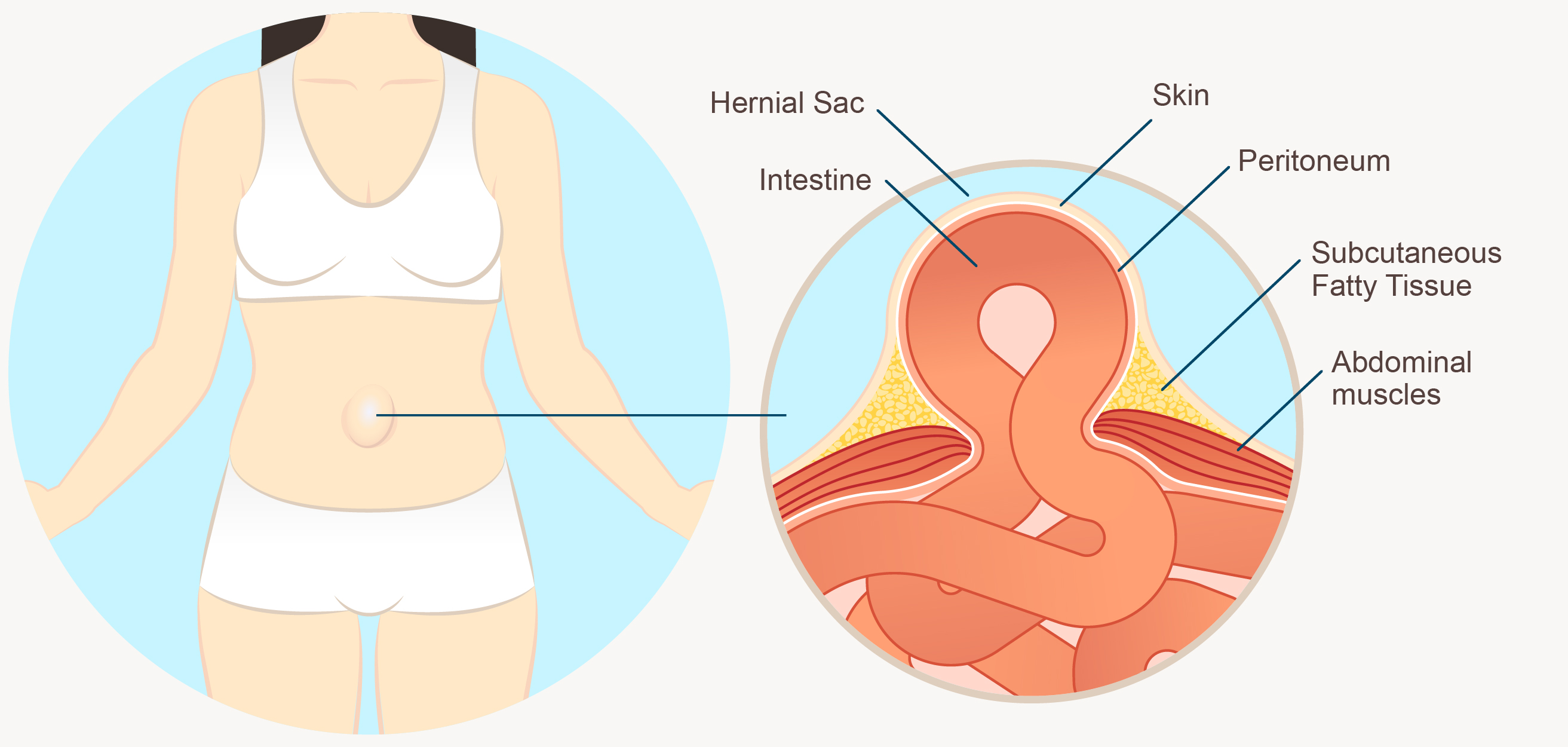
Understanding Hernia: causes and symptoms
( ![]() Click the image to enlarge )
Click the image to enlarge )
Hernia refers to the situation where part of an internal organ, usually is the small intestine protrudes through a weakened spot of the abdominal wall and forms a mass.
In normal circumstances, hernia would become visible when patient stands up; it would disappear once he/she lies down. Coughing, bowel movement, standing or walking for a long time can also make the hernia more obvious.
The causes of hernia include difficulty in urination, constipation, chronic cough, obesity, lifting heavy objects, weightlifting, and other situations that increase abdominal pressure.
In addition, aging with the loss of muscle mass, the abdominal wall would become thinner and weaker gradually; it is also a common cause of hernia formation.
How many types of hernia are there?
There are different types of hernias, the common types are inguinal, femoral, umbilical, and incisional hernias.
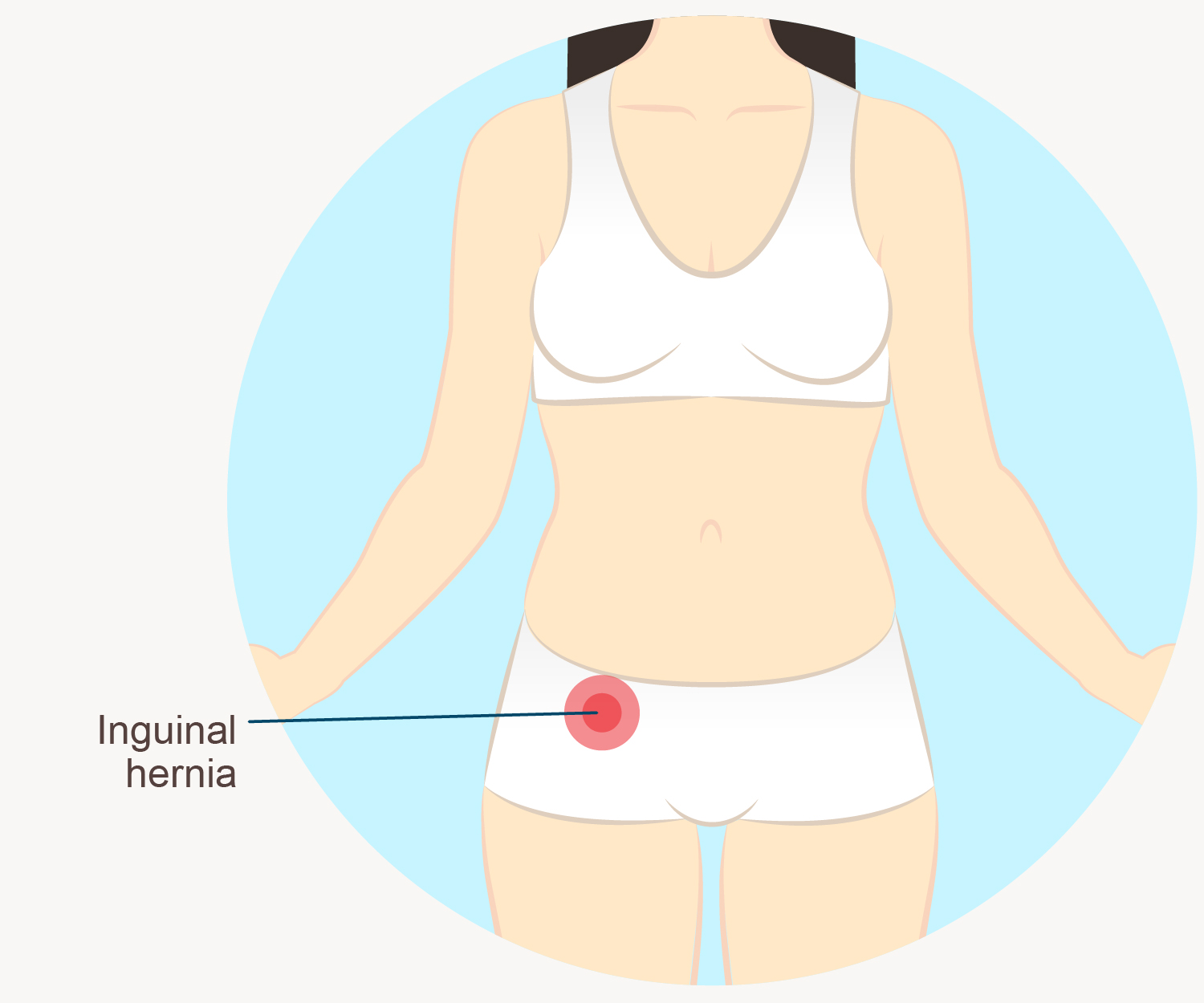
Inguinal hernia
Inguinal hernia is the most common abdominal wall hernia, occurring in 75% of cases. Most cases occur before the age of 5 and after the age of 70. Groin is the area between the lower abdomen and the pelvis; when subjected to high abdominal pressure, abdominal organ can protrude through the weaker abdominal wall of the groin. Inguinoscrotal hernia occurs when the hernia extends into the scrotum of male patient, causing scrotal pain and swelling.
Inguinal hernia can occur on one or both sides. Particularly, right-sided inguinal hernia is three times more common than left-sided inguinal hernia among children.
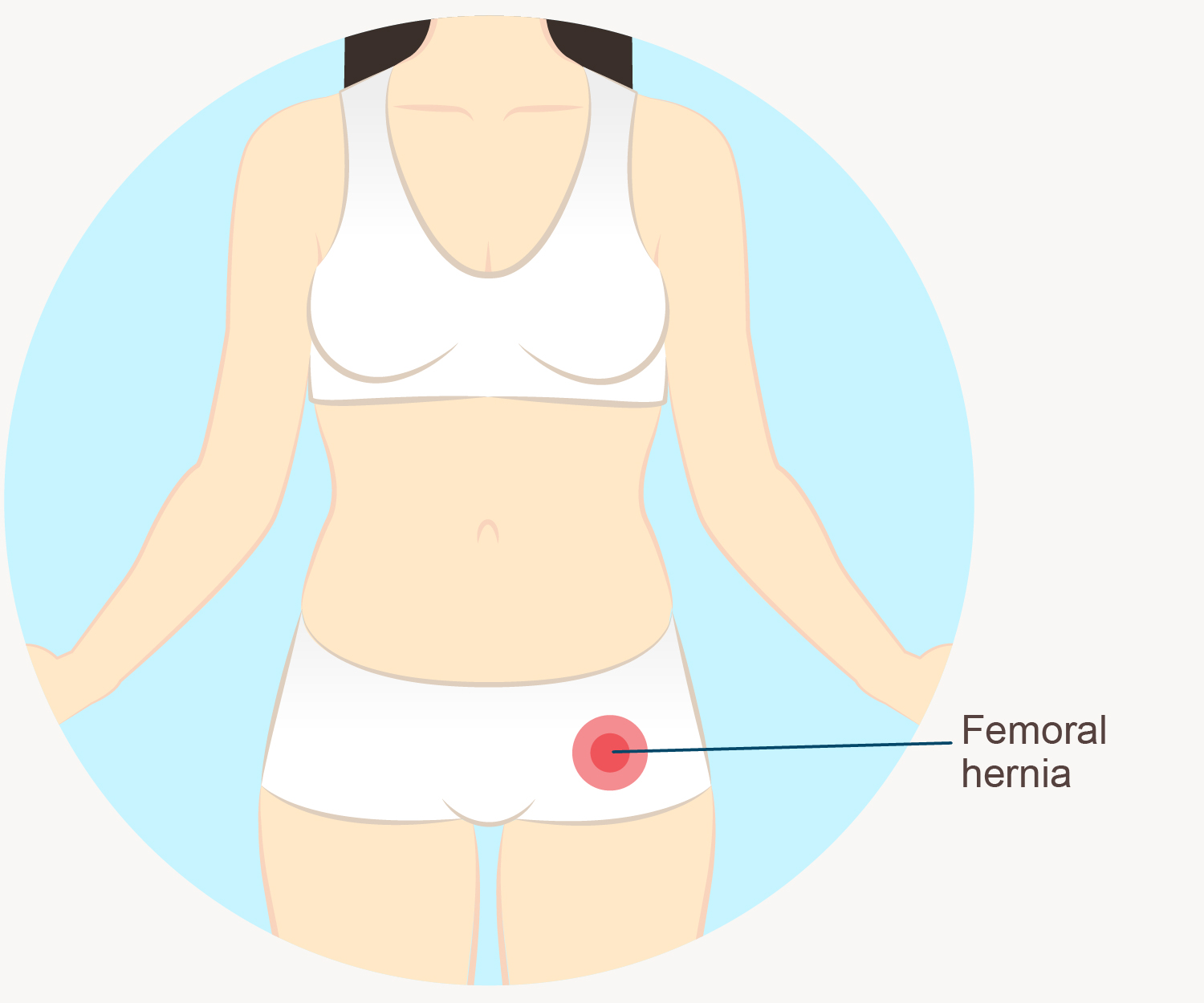
Femoral hernia
Femoral hernia is a protrusion of abdominal organs at the junction of the thigh and abdomen. Femoral hernias are uncommon, accounting for only 2-4% of all abdominal wall hernias. Because the defect of a femoral hernia is typically small, it can easily lead to strangulation and bowel ischemia.
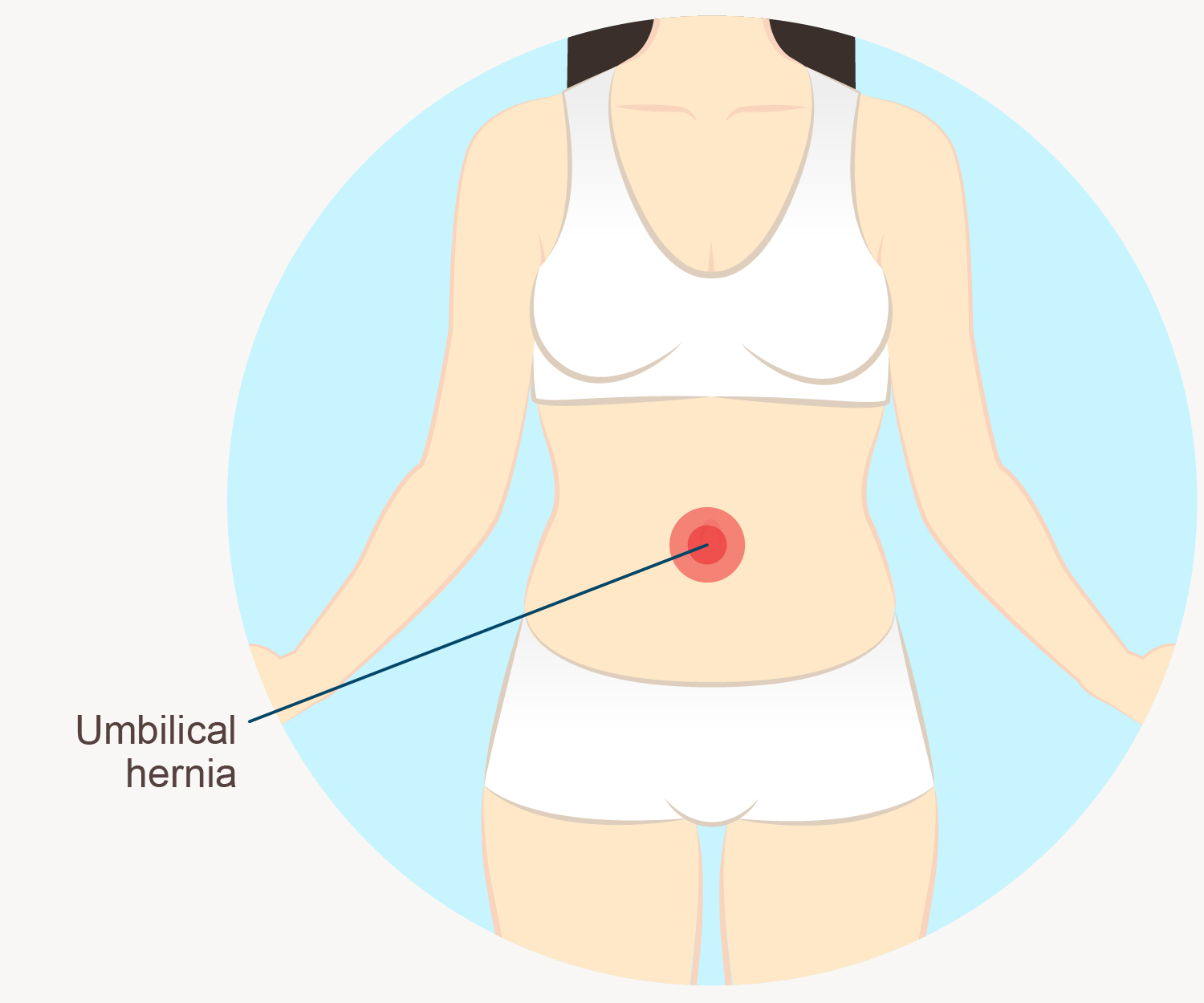
Umbilical hernia
Umbilical hernia is a condition in which abdominal organ protrudes through the abdominal wall near the bellybutton, causing a swelling at bellybutton. Umbilical hernia often occurs in infants, children, pregnant women, and women who have given birth.
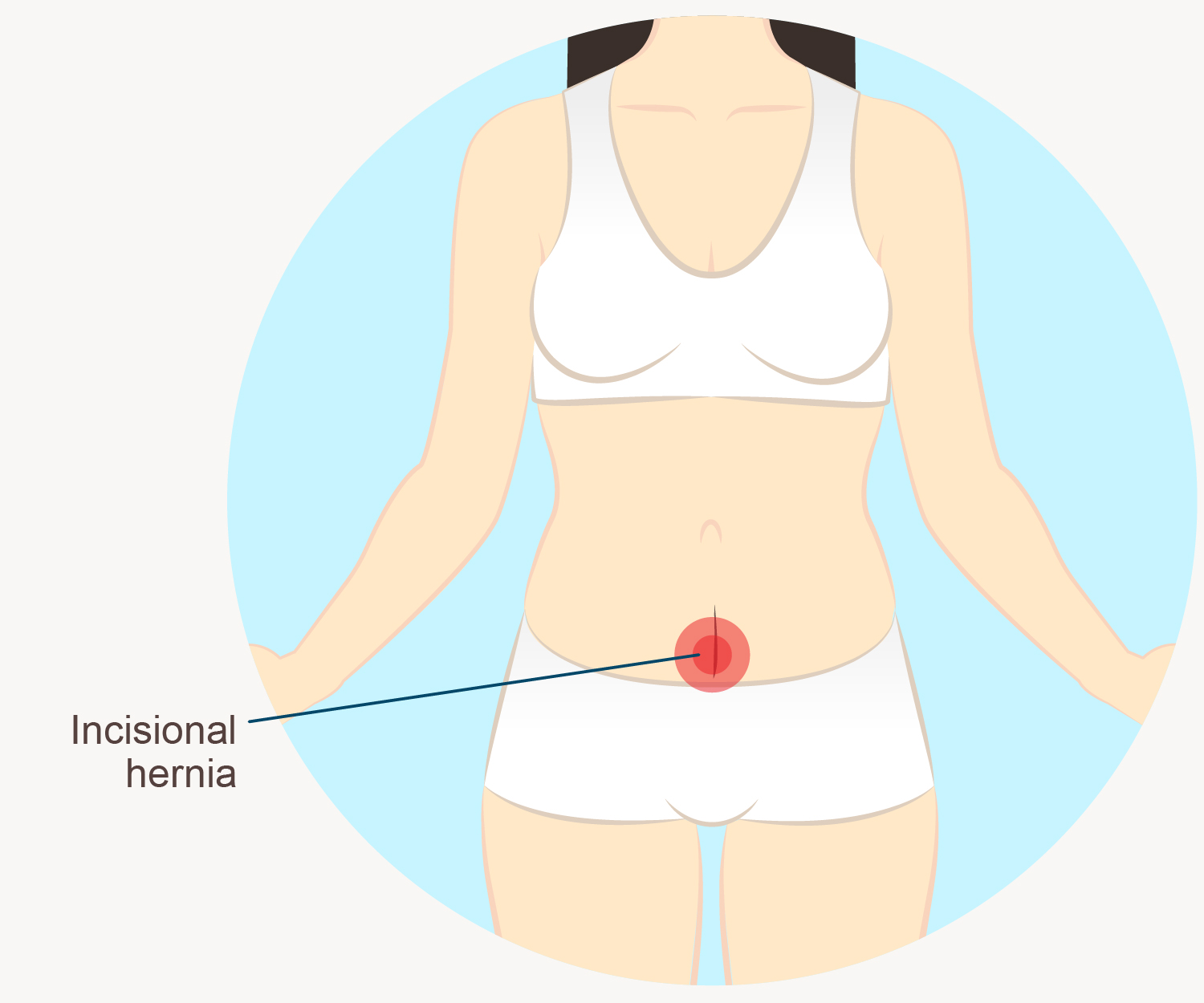
Incisional hernia
incisional hernia is an abdominal well hernia that develops at the surgical incision site. Its occurrence is due to weakened abdominal muscles caused by the surgical incision, combined with other risk factors such as excessive or premature physical activity after surgery, pregnancy before the wound has healed, or increased abdominal pressure before the incision has closed. Furthermore, the risk of an incisional hernia is increased if the patient has diabetes, chronic medical conditions, obesity, advanced age, wound infection, steroid use, or malnutrition.
Hernia and its prevalence in different gender.
Due to anatomical differences and specific risk factors, men are significantly more prone to hernia, particularly an inguinal hernia.
The inguinal canal of male is a pre-existing opening where the testicles descended through the abdominal wall during fetal development; it remains a weak spot of the abdominal wall in adulthood and is more susceptible to hernia occurrence.
About 27% of men will develop an inguinal hernia in their lifetime, compared to only about 3% of women.
As for femoral hernia, women are 8 to 10 times more likely than men to suffer from it.
Treatment Options for Hernia
Hernia does not improve on its own or with medications; and it tends to be worsened over time if left untreated. Surgical intervention is the only solution and it must be done promptly to avoid incarceration and strangulation.
An incarcerated hernia occurs when a protruding intestine becomes trapped, leading to serious complications such as intestinal obstruction and ischemic necrosis. Because emergency hernia repair significantly increases the complexities involved, conventional methods are often used.
The method of hernia repair and anesthesia depends on its type and the condition of the patient. For example, for patient with inguinal hernia, there are options of conventional and minimally invasive surgeries.
Conventional Inguinal Hernia Repair Surgery
Conventional surgery can be performed under general, spinal or local anaesthesia. Depending on the size of the hernia, an incision of 5cm or above would be made above the inguinal hernia site. A synthetic mesh would then be placed inside to repair the gap.
Minimally Invasive Inguinal Hernia Repair Surgery
Minimally invasive surgery requires general anaesthesia. Three tiny incisions would be made below the bellybutton to allow the laparoscope (which contains a video camera at the tip) to enter the body, reach the hernia site, assess the situation and place a synthetic mesh to cover up the defect.
While the risks of complications and recurrence are similar between conventional and minimally invasive surgeries, minimally invasive surgery can repair both sides of inguinal hernias simultaneously. Furthermore, minimally invasive surgery has lower post-operative pain and the risk of wound infection when compared with conventional surgery, which leads to shorter recovery time.
Therefore, minimally invasive laparoscopic hernia repair is the preferred option for recurrent hernias and bilateral hernias.
One drawback of laparoscopic inguinal hernia repair is that the post-operative scar and fibrosis will lead to hindrance to robotic assisted prostatectomy in the future.
Reference :
- Inguinal hernias in children. (2021). Australian Journal of General Practice. https://www1.racgp.org.au/ajgp/2020/january-february/inguinal-hernias-in-children
- Jenkins, J. T., & O’Dwyer, P. J. (2008). Inguinal hernias. BMJ, 336(7638), 269–272. https://doi.org/10.1136/bmj.39450.428275.ad
- R, K. H. (2024). An update on the Management of Femoral hernias: Narrative Review article. SAR Journal of Surgery, 5(05), 43–48. https://doi.org/10.36346/sarjs.2024.v05i05.002
- Seymour, N. (2019, September). Inguinal Hernia | NIDDK. National Institute of Diabetes and Digestive and Kidney Diseases. https://www.niddk.nih.gov/health-information/digestive-diseases/inguinal-hernia








